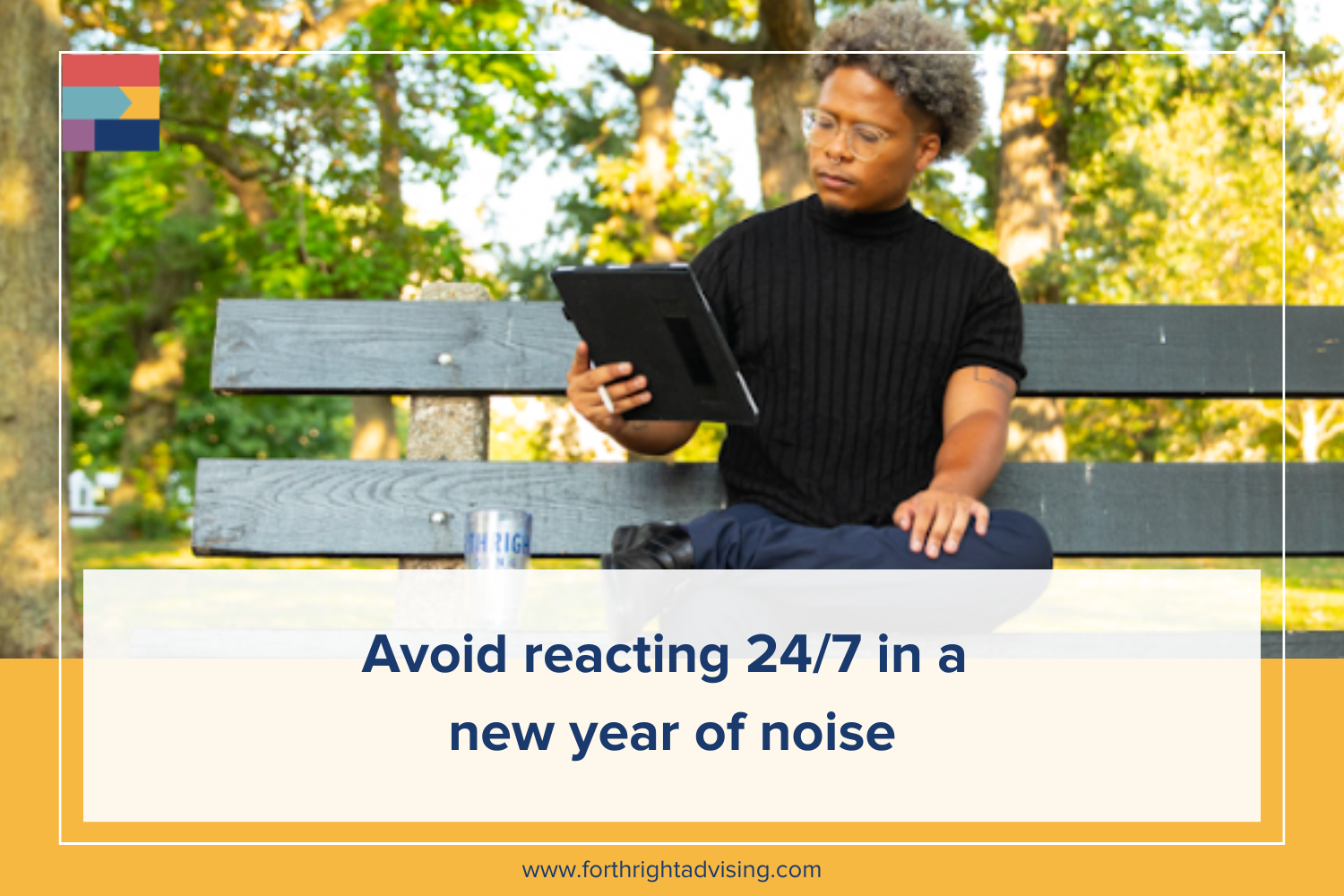Avoid reacting 24/7 in a new year of noise
Written by jon jon MOORE
Political transitions can feel like drinking from a firehose. Headlines spark fear, social feeds rile people up, and your team looks to leadership wondering: should we say something about this?
Over the next few months, the noise is only going to get louder and louder.
But here's the thing — you can’t sprint against the wind for months or years at a time.
And you definitely can't let each bill proposal or sound bite throw your communications strategy out of whack and put your team on the defensive line.
Here are three tips to prevent your team from living in reaction mode for the next year (or four).
anchor for authenticity
Remember 2020? When too many organizations suddenly had a stance on…everything? Those days taught us an important lesson: part of wielding your organization’s voice is knowing when to step up and when to shush up.
When we remember our core values, we can respond to events with purpose rather than panic. If you don’t already have it, provide your team a clear sense of what you stand for — and what you don’t — that won't shift with each news cycle. Think of these ‘anchors’ as your North Stars, guiding decisions about when to speak up and when to step back. These are not simply your values, but your values put into practice.
For example, let’s say your school district or foundation advocates for and values all children’s safety. You don’t just value children’s safety in theory: you care about the physical safety and well-being of every child. If this is true, and you don’t have one already, you need to develop a stance or official policy on ICE raids in schools right now.
>> Ask: what are the three issues where our unique perspective adds the most value to the conversation? What could happen on these fronts in the near future, and how can we get clear on our stance now?
build your bench
Most issues do not need your organization’s voice front and center. In fact, a huge part of wielding your organization’s voice with care is knowing when to use it — and when to amplify others doing the work instead.
We recommend creating a list of experts and having it ready to go when news hits. Include the organization name, what they’re experts on and their social media handles for easy sharing and tagging. Work with your leadership team to sign off on this list as approved voices to uplift — and do it ahead of time.
Think of it as building your B-string — a network of trusted partners whose values and vision of the world you’re building align with your own. When headlines break outside your core focus, you'll know exactly who to uplift instead of scrambling to craft the perfect post.
This is a strategic communications approach, but it’s also much more sustainable than covering all your bases all the time, trying to be everything to everyone. Your audiences are less likely to tune out from message fatigue. And most importantly, you'll build genuine relationships with allies who can stand with you when your issues or community need urgent attention.
>> Ask: who are the organizations we trust to lead conversations on issues outside of our expertise? How can we learn from them before, during and after crises?
practice to prepare
The best time to figure out your stance on an emerging crisis is…not during the crisis. Use these (relatively quieter) months to look ahead — planning for the worst while working towards the best — and build your messaging muscle memory.
Every few months, workshop responses to hypothetical (real life) scenarios. What would your call to action be if a crisis got dramatically worse very quickly? Who would you amplify out-of-state to help your audiences understand the trends you’re seeing — and why awareness matters? These conversations can help you identify gaps in your organization’s communications strategy and build confidence in your decision-making process before the poop hits the coop.
>> Ask: when was the last time we reviewed our crisis communications plan? Are we ready to tackle any challenge, head on?
The bottom line: when you know what you stand for and why, your values — not the news cycle — will guide your voice and connect you to your audience when it counts.

















